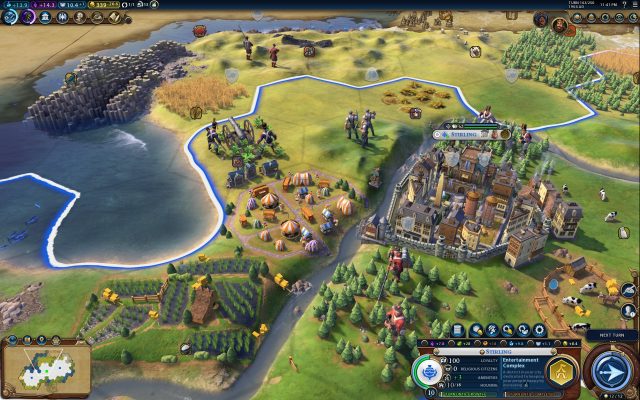
"Network-centric warfare" is the hot concept in modern military thinking—soldiers fighting not just with weapons but within a web of sensors and computation, giving them and their commanders superior awareness of the battlefield. But the problems this approach was conceived to solve are timeless. I’m here, the enemy is out there somewhere. How do I find them? How do I keep track of them? Once the battle has started, how do I know where to move? Heck, how do I even keep track of my own people?
Long before IoT concepts littered the world, the navies of the early 20th century were among the first to take a systematic approach to answering these questions. Sail had given way to steam and European colonies had metastasized around the world. Warships were moving faster and required coordination across greater distances than ever. Meanwhile, telegraphs and radio allowed instant communications at previously unheard-of distances. All of this combined to create a revolution in how navies used information.
If you’ve played strategy games like StarCraft or Civilization or watched Cold War techno-thrillers, you’ve seen the ideal display for a commander: a map where the positions and status of friends and enemies alike are displayed and tracked in real time. This single, unified picture gave those in leadership a god’s-eye view of the battlefield that could be used for accurate decision-making. But how did commanders create this picture without computers, GPS, and communications satellites? How did they keep their maps accurate and up to date?
It may be hard to fathom now, but the great naval powers of the day all had their own methods, and their use had profound effects on tactics, strategy, the design of warships, and ultimately, combat. It’s no exaggeration to say that some of the major naval battles of World War I and World War II turned not just on firepower but also on computational power.
Battlecruisers and the birth of information-centric warfare
In 1900, the British Empire was at the height of its powers and the Royal Navy ruled the waves. But the Brits had a problem. Russia and France were Britain’s most likely enemies, and they knew they couldn’t match the Royal Navy in a straight-up fight. Instead, they built armored cruisers- powerful warships that could sink anything smaller than a battleship while being much faster. In the event of war, these vessels would be set loose on British shipping lanes, posing an existential threat to an Empire held together by seaborne trade.
To deal with this threat, Britain started building its own armored cruisers, even faster and more heavily armed than the French and Russian ships. But ships on the open sea are hard to find, so Britain needed to build enough armored cruisers to station them on all of its trade routes. It was like playing whack-a-mole by buying a separate mallet for every hole, and it was rapidly becoming unaffordable. Rich as the British Empire was, it had to figure out a different strategy.
Enter Admiral John “Jacky” Fisher. Fisher was appointed First Sea Lord, the commander of the Royal Navy, in 1904. He is famous for his technical innovations, most notably conceiving the HMS Dreadnought, which set the standard for all battleships to follow. What’s less well known is that Fisher was appointed not to execute his ideas for turning the Royal Navy into a better fighting force, but to stop the massive growth of the naval budget.
His solution to the armored cruiser problem was another revolutionary ship concept: the battlecruiser. It would have a speed faster than any existing armored cruiser, but it would carry the same guns as a battleship. In theory, it could chase down and destroy any armored cruiser while staying out of range of the cruiser’s own guns.
The battlecruiser was so important that initially the Royal Navy only built one new battleship to try out the Dreadnought concept, but they immediately built three battlecruisers of the Invincible class. Now, battlecruisers have a controversial place in naval history that is too complicated to get into here. But one question worth raising is, why did Fisher, and anyone else, think they were a good idea? And, given the whole budget problem, how could the British start building ships that were even more expensive than the armored cruisers they were replacing?
The answer to these questions are less obvious and not as well known—because they have to do not with the technology of the ships, but with how Fisher envisioned they would be used. Norman Friedman discusses this extensively in his book Fighting the Great War at Sea: Strategy, Tactics and Technology.
If you compare a British battlecruiser to a battleship of the time, you can see a few obvious differences: fewer guns, more funnels. But there’s another, more subtle difference - the battlecruisers were each equipped with towering masts to hold long-ranged radio antennas. These antennas let them communicate with land-based stations from hundreds or even thousands of miles away, and they were the key to a new kind of cruiser warfare.
-
The battlecruiser HMS Invincible. Notice her two massive tripod masts, which carried long-range radio antennas strung between them.
-
Compare that with the battleship HMS Dreadnought, with more guns and armor but only a single large tripod mast.
Fisher knew there was no way Britain could afford to build enough battlecruisers to cover all of its trade routes. But it wouldn’t need to—in addition to being a naval superpower, Britain was also an information superpower. British companies had spent the past few decades building a global network of telegraph cables and radio transmitters, meaning Britain had access to the finest communications infrastructure in the world.
Instead of dispatching his battlecruisers to the far corners of the earth, patrolling for enemy cruisers in the hopes of finding them, Fisher would wait. Reports of attacks on British shipping would be transmitted instantly back to the Admiralty (British naval headquarters) in London, and there they’d be pieced together to form a picture of the locations and activities of enemy cruisers. Then the Admiralty could direct the battlecruisers to exactly the right places to find and destroy those enemies. It was like a fire-control problem, only instead of trying to hit a ship with a gun shell, the battlecruisers themselves would be projectiles fired by the Admiralty.
To achieve his vision of a centrally controlled battlecruiser force, Fisher needed a clear picture of the threats. So he set up a top-secret room in the Admiralty building where intelligence reports and shipping news from all over the world were aggregated onto large maps that showed the positions of every friendly and known enemy ship.
This was known as the Admiralty plot. Unlike the displays you might see in a modern military headquarters (which may be updated every few minutes or seconds), these paper maps had a “refresh rate” of hours or even days. But they were nonetheless revolutionary, because for the first time in history a centralized commander could look at a representation of the world naval situation, with every friendly force and known enemy force tracked all around the world in nearly real-time. The British leadership could then issue commands accordingly.
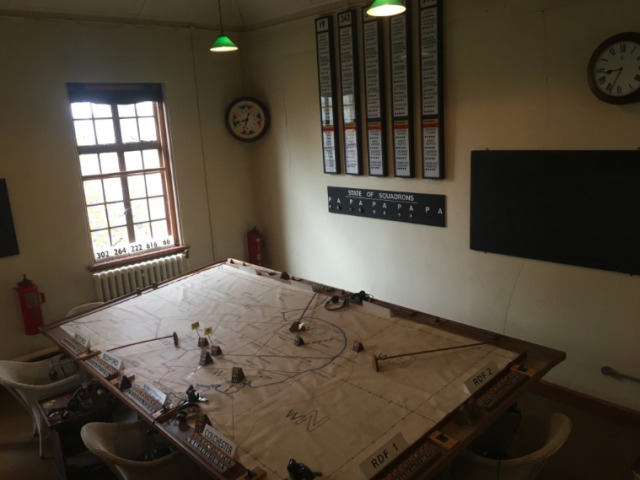
This was the innovative strategy behind the battlecruiser, and it was particularly realized in one spectacular battle during World War I.
Shortly before the outbreak of war, the German East Asia Squadron left its base in Tsingtao, China. The squadron, a crack gunnery force built around the armored cruisers Scharnhorst and Gniesnau, was led by Admiral Graf von Spee, probably the most innovative and daring commander in the Imperial German Navy.
Once war was declared, the East Asia Squadron did exactly what earlier French and Russian strategists envisioned, wreaking havoc on British trade in the Pacific for months. Eventually, they crossed the Pacific and destroyed a smaller force of British cruisers off the South American coast at the Battle of Coronel. It was the worst defeat the Royal Navy had suffered in over a century.
But radio reports from British merchant ships that were captured or sunk allowed the Admiralty to pinpoint the location of the German forces as they crossed the Pacific and then turned the Cape of Good Hope.
The Royal Navy dispatched the battlecruisers HMS Invincible and HMS Inflexible to the South Atlantic. There, at the Battle of the Falkland Islands, the German squadron was annihilated by the much more powerful and longer-ranged guns of the British battlecruisers. It was everything the battlecruiser had been designed to do, vindicating not just Fisher’s ships but also his information-centric strategy.
It was the high-water mark for battlecruisers. Unfortunately for their reputation, though, after that the Royal Navy found itself in a very different war than the kind battlecruisers had been designed to fight. Germany, unlike France and Russia, had not decided to go for commerce-raiding cruisers. Instead they decided to challenge the British head-on, building their own fleet of battleships and battlecruisers.
These naval behemoths would eventually meet at the Battle of Jutland in 1916. There, the British battlecruisers met their doom, and that’s another battlecruiser story outside the scope of this article. What is in scope, however, is the critical, nearly decisive role that information played in that battle.
Listing image by Wikimedia
The plotting table: Battleships at Jutland
It was quickly obvious to the British that “big picture” views like the Admiralty plot were useful at sea as well as on land. For hundreds of years, admirals had commanded fleets with just the information their eyes could give them. Battles between fleets quickly devolved into confused melees, and there was usually little that admirals could do in terms of tactical command after battle was joined beyond enforcing Nelson’s famous dictum that “no captain can do very wrong if he places his ship alongside that of the enemy.”
This started to change in the years leading up to World War I. The British fleet grew tremendously, and its commanders needed a better understanding of where friendly and enemy ships were to avoid friendly fire and get an advantageous position on the enemy.
So the British brought the idea of real-time position plotting to sea. They created plotting tables, large maps that were updated every few minutes to show the positions of friendly and enemy ships. These were like smaller versions of the plots used by the Admiralty.
And to generate the information that fed these plots, in addition to the big rangefinders used for finding the range to enemy ships for fire control, they festooned their ships with small tactical rangefinders that were used to measure the distance and position of friendly ships in the same fleet.
You can actually see this progression in the physical design of battleships over time. Pre-Dreadnought battleships, like those that fought in the Russo-Japanese War in 1906, have very simple bridge structures. Essentially, it’s an open platform for an admiral to stand on with a small signaling staff and no obstructions so the admiral could see as far as possible all around.
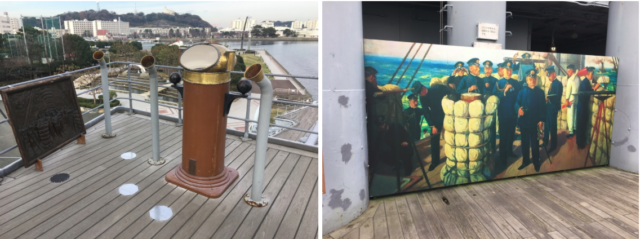
But as the demand for information from plotting grew, so did the need for space. Remember, without electronic computers, everything had to be represented physically. An admiral would need multiple plots at different scales and resolutions. They’d need a large strategic plot, showing the general location of entire fleets over an area of several hundred miles and used to consider strategic fleet movements. But they would also need smaller plots at finer resolution, showing the positions of individual ships during a battle, and since paper doesn’t zoom, each plot would need a separate table.
And although there were basic analog computers for computing firing solutions, tracking ships and calculating their headings was manual work, done by men with paper and slide rules. So each table needed its own team of officers and men to update the position of every ship or fleet that was being tracked along with men to relay and record the measurements being produced by the rangefinders.
Over time battleships spouted large superstructures, huge edifices housing what were essentially small office buildings where an Admiral and his staff could work and conduct operations.
-
The pre-dreadnought battleship Mikasa at left, and the battleship USS Missouri at right. You can see the massive growth in the superstructure of battleships as the need for space grew.Haomiao Huang / Wikimedia
-
The main battery plotting room on the USS Missouri. This is just for keeping track of gunnery, not even encompassing the overall strategic plot! Contrast this with the Mikasa above.
This British innovation lead to a (nearly) decisive result at the Battle of Jutland, the first and only meeting of the combined British and German fleets in World War I. It was a massive battle, a total of 151 warships of the British Grand Fleet facing off against 99 ships of the German High Seas Fleet. 28 British dreadnoughts plus 9 battlecruisers versus 16 German dreadnoughts and 5 battlecruisers. It was and remains the largest clash of battleships in history.
The commander of the German High Seas Fleet, Admiral Reinhard von Scheer, would fight the battle much as his predecessors might have decades before. But Admiral John Jellicoe, commanding the British Grand Fleet from the HMS Iron Duke, had at his disposal not only superior numbers but also tactical plots showing the relative positions of both the ships in his fleet and the positions of German ships. In video game terms, it was like they were both playing a real-time strategy game, but Scheer had to play from a first-person perspective.
This led to predictable results. The British fleet was able to maneuver to a superior position. In the age of the battleship, the ideal positioning was to cross your opponent’s “T” - that is, to present your broadside to the opponent, so that all of your ships’ guns could fire, while your opponent is pointed at you, and only able to fire their forward guns, which would be much fewer.
Thanks to the superior situational awareness that his plotting provided, Jellicoe was able to cross Scheer’s “T” not once but twice. Not only that, but he was able to place himself in a position between the German fleet and its base by nightfall. The German fleet was intact but badly damaged, and it seemed that all that was left would be to finish them off in the morning.
Except… as often happens with a major innovation, there was still much to figure out in practice. So it was with plotting tables. Remember how much space those plotting tables and their associated human “computers” required? This meant that only the largest of ships could carry them. And because of the limited bandwidth of morse code and signal flags, the comprehensive picture that the admiral’s flagship carried couldn’t be easily replicated to other ships.
That night, the German fleet made a break for home, and in doing so it passed through the screening destroyers and light cruisers that were supposed to be the eyes and ears of the Grand Fleet.
The captains of the British light forces were all aware that the Admiral in command usually had, via his plots, a better picture of the situation than they did. So each fought their own individual battles, but, assuming their commander had a better understanding of the overall battle than they did, they did not bother to report details of their positions. All Jellicoe knew was that some of his light forces were sporadically fighting German forces, but where, when, or how many, wasn’t clear. The captains of those ships didn’t realize that it was their reports that made up the Admiral’s picture in the first place.
When morning came, it was too late. The German fleet had slipped past and was well on its way home.
Despite the failure that night, it was clear that the plotting table had proven its worth and then some. It quickly spread to allied navies that were aligned with the British in World War I, the most important of which were the US Navy and the Japanese Navy. Both of these future adversaries learned a lot from working and fighting with the premier naval force in the world, and they took these learnings home with them.
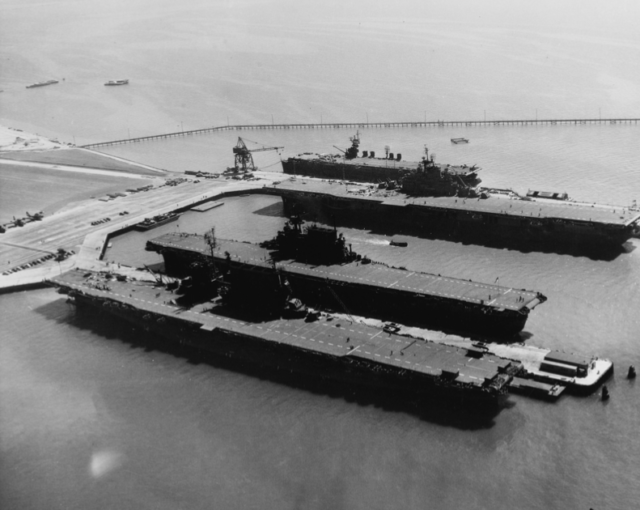
Leyte Gulf and the revenge of the plotting table
The plotting table became so important to the US and Japanese navies that it might, in fact, be the explanation for one of the enduring naval mysteries of World War II.
The Battle of Leyte Gulf in October of 1944 was the largest naval battle in history. To retake the Philippines, the US Navy had gathered the combined strengths of two powerful naval forces. The 7th Fleet was comprised of older battleships and small escort carriers, which, though serving as a supporting force, had more firepower than the entire pre-war US Navy. Further offshore providing distant cover were the fleet carriers and fast battleships of the 5th Fleet under the command of Admiral Willam “Bull” Halsey, the largest concentration of naval striking power ever assembled.
The Imperial Japanese Navy, though outnumbered and outgunned, still remained a potent fighting force. And it was determined not to go down without a fight. The IJN hatched a complex, multi-part plan to divide the stronger American forces so they could directly attack the vulnerable transports carrying the troops and supplies of the invasion force.
The Japanese forces would sacrifice their remaining aircraft carriers, which had lost most of their pilots and aircraft, as bait to draw Halsey’s carriers away to the north. This would allow the Center Force, commanded by Vice Admiral Takeo Kurita, to attack the now vulnerable transports along with a separate, smaller Southern Force. The Center Force, built around the super battleships Yamato and Musashi along with other battleships and cruisers, was by far the most powerful of the Japanese forces. Together, these forces represented the entirety of Japan’s remaining naval strength.
The opening phases of the battle went poorly for the Japanese. American submarines sank several of Kurita’s ships, including his flagship, the heavy cruiser Atago. Airstrikes by Halsey’s carriers also sank the battleship Musashi and forced Kurita to turn back. In the early morning hours of October 25, 1944, the Southern Force was obliterated by the battleships of the 7th Fleet in the Surigao Strait, old veterans of Pearl Harbor that had been raised and upgraded.
But as the sun rose, the situation had turned. The day before, believing that Kurita’s Center Force had been defeated and was retreating, Halsey had turned north to go after the Japanese carriers. But Kurita had decided to turn back. And now, with Halsey’s 5th Fleet drawn away to the north and the 7th Fleet’s battleships to the south, the only thing that stood between Kurita’s battleships and the transports of the invasion fleet were the escort carriers of Taffy 3 - one of the smallest task forces in the 7th Fleet.
It was a pretty lopsided fight. Against the Center Force’s 4 battleships (including the Yamato, which alone weighed as much as the entire American force), 6 heavy cruisers, 2 light cruisers, and 11 destroyers, Taffy 3 could muster a measly 6 escort carriers, 3 destroyers, and 4 destroyer escorts.
Officially, the designation for the escort carriers, CVE, stood for Carrier, aViation, Escort. But their sailors called them “Combustible, Vulnerable, Expendable.” They weren’t even carrying armor-piercing bombs - they were supposed to be bombing Japanese troops on land, not facing off against the pride of the Imperial Japanese Navy.
Taffy 3 put up a valiant fight, and aircraft from nearby Taffy 1 and Taffy 2 helped out. Tiny destroyers made suicide runs against battleships 30 times their size, and aircraft that had run out of ammunition made dry runs to force the Japanese ships to maneuver. One pilot even resorted to shooting his .38 caliber handgun out of his plane at the Japanese ships.
Taffy 3’s valiant fight was the stuff of legends, a desperate last stand that would go down in history. And those tiny carriers actually succeeded in sinking several of Kurita’s cruisers. But it wasn’t going to be enough. They could delay Kurita’s battleships, but they couldn’t sink them.
But just when all seemed lost, with the escort carriers fleeing before them and the invasion transports seemingly within reach, Kurita ordered the Japanese fleet to turn around and go home. The biggest, most powerful battleship ever built had been sent running by a few converted cargo ships. What happened?
After the battle was over, Kurita gave conflicting explanations for why he turned back. But the one he would return to was that, in the heat of the battle, he believed that he had run into Halsey’s main force of carriers, and had he not turned back he would have been destroyed by air attack and Halsey’s battleships.
Historians have spent decades debating how this could have happened. How could Kurita have mistaken the small, slow escort carriers of Taffy 3 for Halsey’s fleet carriers, three times their size?
It’s likely there were many factors, including exhaustion and the stress of having to swim for his life when his flagship was sunk. But in recent years, as Norman Friedman discusses in his book Network Centric Warfare: How Navies Learned to Fight Smarter Through Three World Wars - some historians have suggested another cause. And this is where we come back to the plotting table.
Admiral Kurita fought most of the battle of Leyte Gulf from the battleship Yamato, which he had transferred to after losing his flagship, the cruiser Atago. The cruiser sank so fast that Kurita had to swim for his life, and he suffered 2 critical losses.
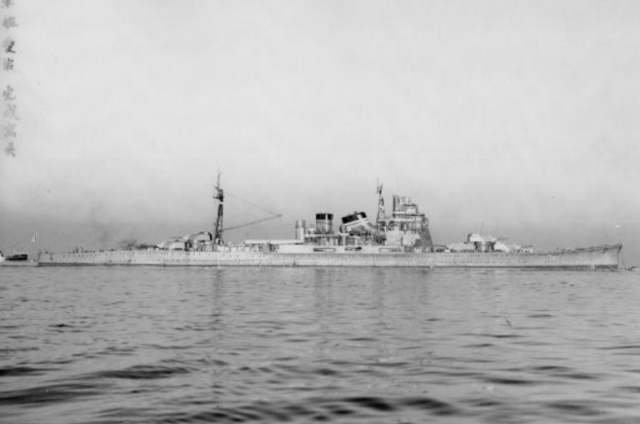
The first was his plotting tables. He lost both his strategic and tactical plots. While the tactical plot could be reconstituted at some level when he transferred to the Yamato, the critical information contained in the strategic plot—the positions of the multiple American fleets relative to his own—was lost.
The other, perhaps more critical loss, was that many of his staff died aboard the Atago. And remember, the admiral’s staff was the what updated ships’ positions, calculated speeds and courses, and generally served as the computing power that maintained the situational awareness the admiral depended on for decision-making.This meant that even had the information been available to build up a better picture he wouldn’t have been able to take advantage of it. There simply wasn’t enough processing power to fight on.
This answers one of the questions historians had regarding the battle. Visually, one carrier looks much like another, and perhaps in the heat of battle with smoke all around it’s easy to mistake a small escort carrier for a big fleet carrier farther away. But fleet carriers are fast ships, much faster than Kurita’s battleships. Whereas escort carriers, converted from oilers and cargo ships, were much slower. In fact, as the battleships bore down on the little carriers and their anti-aircraft gunnery crews looked on helplessly, an officer cheered them by saying “just wait a little longer, boys, we’re suckering them into 40mm range!” How could Kurita failed to have noticed that his fleet was gaining on the little escort carriers of Taffy 3?
The answer, of course, is that he didn’t realize it. The tool he would have used to know his position relative to the American carriers would have been his plot,and he didn’t have enough staff to keep the plot updated in real time. Without his strategic plot, Kurita would only have a hazy sense of where the rest of the American forces might be.
So all he would have known was that he was under constant air attack from nearby carriers, and he had no idea where the main American forces were. For all he knew, any moment the big fast battleships of the American fleet would bear down upon him.
Thus, only miles away from the vulnerable American invasion forces, with nothing but a few small escorts between him and total victory, Kurita turned and made for home. Why? Because his situational awareness had been destroyed. He had plenty of firepower, but not enough computational power.
Epilogue: Computation, the Air War, and the future
Leyte Gulf was the last great clash of warships. In the 75 years since, the US Navy has been the preeminent naval power, and due to its dominance, it's been less concerned with fleet-on-fleet battles and more focused on the threat of submarines and aircraft. The unique demands of this kind of warfare has made information and situational awareness even more critical—submarines because of their stealth, of course, and aircraft because the speeds involved made accurate tracking even more critical.
In that sense, Leyte Gulf gave the US Navy a preview of its future. It marked the introduction of a new scourge: the suicide attack. Over the next year, the pilots of Japan’s Special Attack Units, known to all as the kamikaze, wrought havoc on the USN.
The US use of radar tracking had decisively defeated the aviators of the Imperial Japanese Navy, once the finest in the world. But the obsolete planes used by the Special Attack Units, flying singly or in many small groups instead of single large waves, overwhelmed the manual tracking of the Americans, and many more planes got through. They were saturation attacks.
After the war, the Soviet Union soon embraced guided missile technology for use against ships, which had been pioneered by the Germans during World War II. This new threat replicated the kamikaze attacks and threatened to overwhelm American defenses. So the US Navy had to come up with ever more sophisticated computerized systems, eventually culminating in the famed Aegis system that equips its warships now.
These days, the sensor networks a warship has at its disposal far outstrip anything the admirals of WWII could have imagined. But all of it started with the most analog of computing powers—people, pen, paper, and sweat.
Haomiao Huang is an investor at the venture capital firm Kleiner Perkins, where he specializes in early-stage investments in hardtech companies: semiconductors, aerospace, robotics, and so on. Before he went over to the dark side he co-founded Kuna, a smart home security startup, built self-driving cars at Caltech, and flew drones at Stanford. He’s deeply grateful to have opportunities to share his love of robots, AI, and history with the Ars community.
"how" - Google News
March 25, 2020 at 09:23PM
https://ift.tt/3akAGO9
How computational power—or its absence—shaped World War naval battles - Ars Technica
"how" - Google News
https://ift.tt/2MfXd3I
Bagikan Berita Ini














0 Response to "How computational power—or its absence—shaped World War naval battles - Ars Technica"
Post a Comment